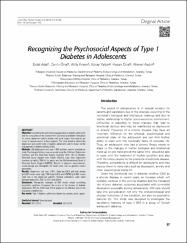| dc.contributor.author | Adal, Erdal | |
| dc.contributor.author | Önal, Zerrin | |
| dc.contributor.author | Ersen, Atilla | |
| dc.contributor.author | Yalçın, Koray | |
| dc.contributor.author | Önal, Hasan | |
| dc.contributor.author | Önal, Hasan | |
| dc.date.accessioned | 10.07.201910:49:13 | |
| dc.date.accessioned | 2019-07-10T19:57:44Z | |
| dc.date.available | 10.07.201910:49:13 | |
| dc.date.available | 2019-07-10T19:57:44Z | |
| dc.date.issued | 2015 | |
| dc.identifier.citation | Adal, E., Önal, Z., Ersen, A., Yalçın, K., Önal, H. ve Aydın, A. F. (2015). Recognizing the psychosocial aspects of type 1 diabetes in adolescents. Journal of Clinical Research in Pediatric Endocrinology, (7)1, 57-62. https://dx.doi.org/10.4274/jcrpe.1745 | en_US |
| dc.identifier.issn | 1308-5727 | |
| dc.identifier.issn | 1308-5735 | |
| dc.identifier.uri | https://dx.doi.org/10.4274/jcrpe.1745 | |
| dc.identifier.uri | https://hdl.handle.net/20.500.12511/3039 | |
| dc.description | WOS: 000351307200009 | en_US |
| dc.description | PubMed ID: 25800477 | en_US |
| dc.description.abstract | Objective: Considering the ever increasing population of diabetic adolescents and the association of the disease with psychosocial problems throughout its course, depression and/or anxiety and social support from parents are issues of special concern in these patients. The study aimed to identify the depression and anxiety state of diabetic adolescents and its impact on the management of diabetes mellitus (DM). Methods: 295 adolescents with type 1 DM and their parents attended our study. Psychological distress was assessed using the Children's Depression Inventory and the State-Trait Anxiety Inventory (STAI I-II) for Children, Perceived Social Support from Family (PSS-Fa) scale, Beck Depression Inventory for adults, STAI I-II for adults and the Multidimensional Scale of Perceived Social Support (MSPSS). Records of glycemic measurements, insulin dosage and hemoglobin A1c levels were used as glycemic control parameters. Results: Depression rate was 12.9%. State (p<0.001) and trait anxiety (p<0.001) levels were high; PSS-Fa (p<0.001) and MSPSS (p<0.006) scores were low in the depressive patients. Positive correlations were noted between depression, PSS-Fa, STAI-I and STAI-II. Conclusion: Therapeutic strategies of DM should include co-existing psychiatric conditions throughout the course of the disease. In diabetic adolescents, PSS-Fa, STAI-I and STAI-II appear to be effective tools in the evaluation of depression. | en_US |
| dc.language.iso | eng | en_US |
| dc.publisher | Galenos Publishing | en_US |
| dc.rights | info:eu-repo/semantics/openAccess | en_US |
| dc.subject | Type 1 Diabetes | en_US |
| dc.subject | Adolescent | en_US |
| dc.subject | Depression | en_US |
| dc.subject | Anxiety | en_US |
| dc.subject | Social Support | en_US |
| dc.title | Recognizing the psychosocial aspects of type 1 diabetes in adolescents | en_US |
| dc.type | article | en_US |
| dc.relation.ispartof | Journal of Clinical Research in Pediatric Endocrinology | en_US |
| dc.department | İstanbul Medipol Üniversitesi, Tıp Fakültesi, Dahili Tıp Bilimleri Bölümü, Çocuk Sağlığı ve Hastalıkları Ana Bilim Dalı | en_US |
| dc.identifier.volume | 7 | en_US |
| dc.identifier.issue | 1 | en_US |
| dc.identifier.startpage | 57 | en_US |
| dc.identifier.endpage | 62 | en_US |
| dc.relation.publicationcategory | Makale - Uluslararası Hakemli Dergi - Kurum Öğretim Elemanı | en_US |
| dc.identifier.doi | 10.4274/jcrpe.1745 | en_US |
| dc.identifier.wosquality | Q3 | en_US |
| dc.identifier.scopusquality | Q2 | en_US |


















